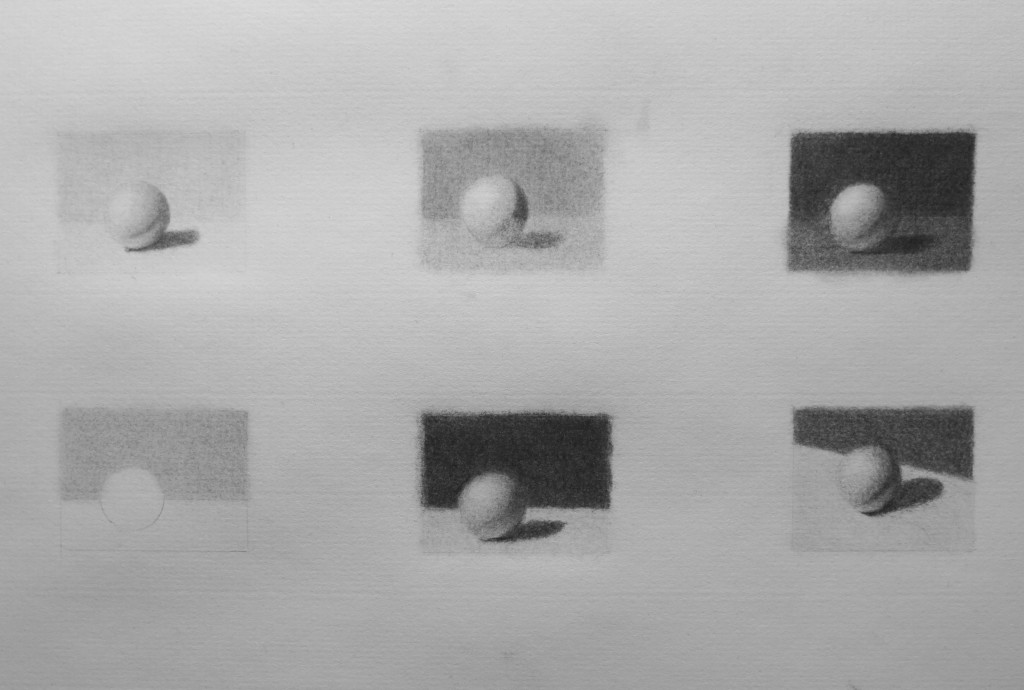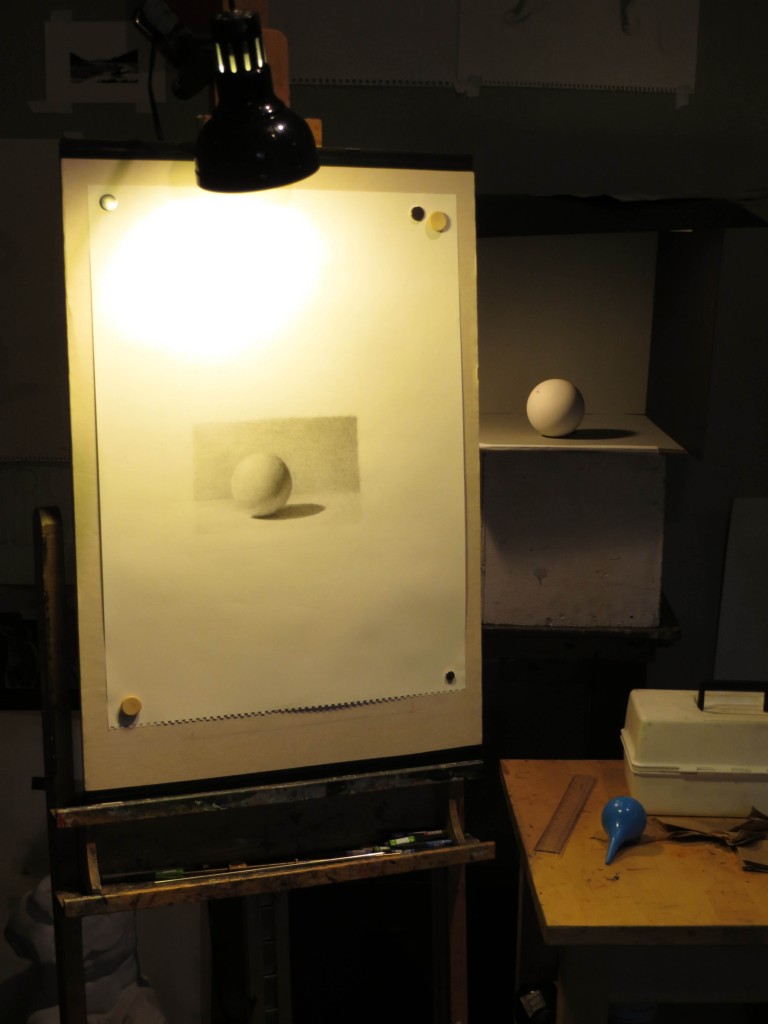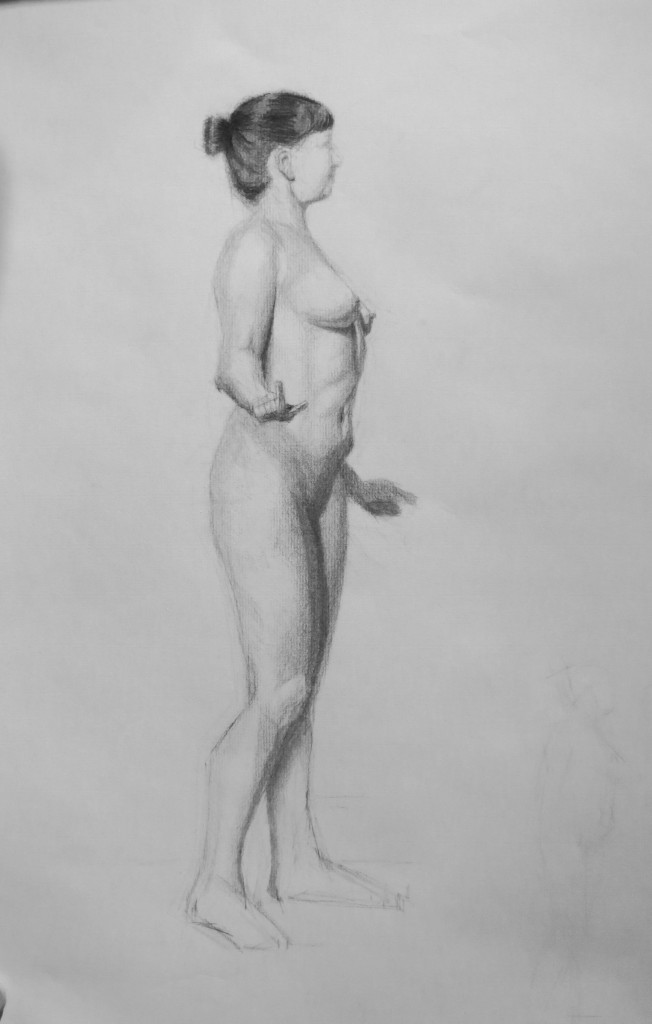You might think that with all of the printmaking and woodworking going on that nothing was happening in the atelier. Au contraire, mon frère – we are all busy learning to render. Rendering in charcoal is a very slow process and learning to render is even slower, so I don’t have a lot to show even though I have been working hard.
Our goal was to learn to render a white sphere lit by a single light source. The easy part was learning what the sphere is supposed to look like – there is actually a lot of nuance in the play of the light and shadow, but you can see it once you know what you are looking for. The really hard part – and the part that takes all of the time is learning to make smooth gradations of gray with charcoal.
You would think this would be easy, but the surface of the paper is actually covered with tiny ridges and valleys, and the ridges tend to pick up charcoal and get darker, while the valleys stay white. This leads to a sparkly look. To get the tone completely smooth requires many many very light passes of charcoal. You need to hit the same spot of paper over and over again in order to break down the paper’s sizing and open up the surface to accept the charcoal. Press too hard, though, and the surface will get too dark before you are able to lay down enough layers to get a smooth tone. And heaven help you if you sneeze.
Musicians practice scales before concertos. As artists, our first rendering exercise is value scales. This scale, which is made of 1″ squares, took me about six hours and it is still a bit sparkly. Must learn patience, grasshopper.
After doing value scales on two different types of paper (Strathmore 500 Charcoal and Canson Mi Teintes), I was ready to move on to value studies. Since a fully rendered sphere takes about 30 hours, we really wanted to look before leaping, so each of us made a number of postage stamp value studies. I was able to do these six in about 4 hours.

A carefully rendered sphere can take 30 hours so we do a bunch of value studies first to make sure we will like the outcome.
Finally the big day came and I was ready to embark on the sphere itself. The first step was to get a really good flat white sphere – I used a Christmas ornament, but others have had good success with light bulbs. The sphere is placed in a box that shields it from most stray light so that the shadows stay really clean. It is lit from a single light source which is clamped in place behind my easel. This setup took a lot of careful effort and adjustment, but it was important since the rendering will take 30 hours. In the image below, I’m about 6 hours into rendering and have what Juliette calls a good under painting or ghost image to work from. Now my challenge is to get the charcoal really smooth.

Sphere rendering setup. The blue ear wash bulb is to blow charcoal off the paper. Many a student has learned the hard way never to blow on a charcoal drawing. A single, microscopic drop of spittle can lead to tears.
Of course, the ultimate goal is not to draw spheres – it is to learn to render and turn form so that we can draw the figure, still life arrangements, and landscapes. We continue to draw from a model each morning in the life room and the poses are getting longer and longer. We begin each session with 20 minutes of gestures from a variety of poses, but the remaining two and a half hours are dedicated to a single pose the lasts about a month. This drawing was from right before the holidays. It was about a three week pose and I probably drew 9 days because I am part time. One challenge for me is that I never get a month long pose because I come in every other day. At some point, later in the year, I may have to switch my schedule so that I draw every morning and then work at Microsoft in the afternoons and evenings. This would give me an entire month on one pose, but I would lose out on the coaching I get in the afternoon studio sessions. Life is full of tradeoffs.


